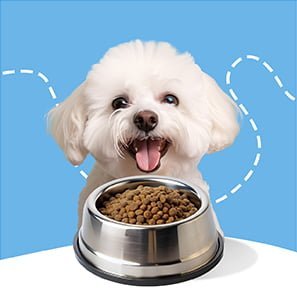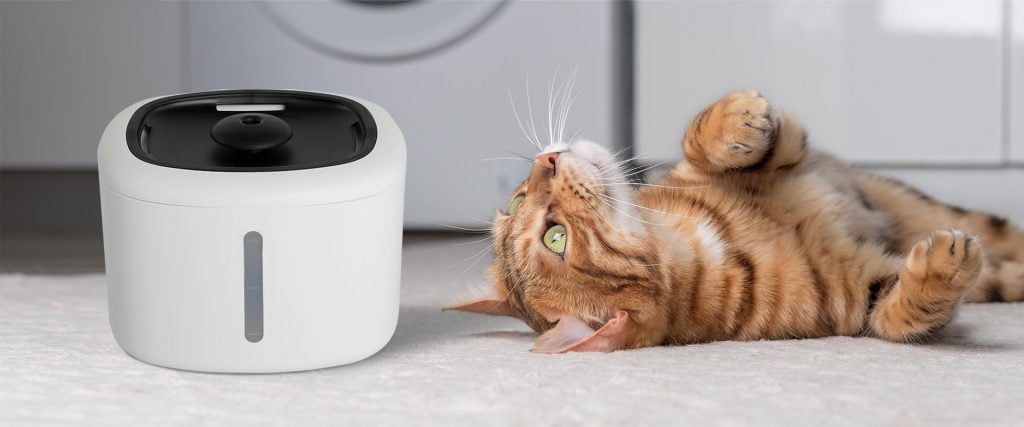Introduction
Choosing the right pet feeder bowl is essential for your pet’s health and well-being. With so many options available, it can be challenging to determine which bowl is best suited for your pet’s needs. This comprehensive guide will explore the various types of pet feeder bowls, their benefits, and the factors you should consider when making a purchase. Whether you have a dog, cat, or another type of pet, this guide will help you make an informed decision.
Understanding the Importance of a Pet Feeder Bowl

Health and Hygiene
A suitable pet feeder bowl can significantly impact your pet’s health and hygiene. The right bowl ensures that your pet eats comfortably and hygienically, reducing the risk of health issues such as infections or digestive problems.
Eating Habits and Comfort
The design and material of the pet feeder bowl can influence your pet’s eating habits and comfort. For instance, some bowls are designed to slow down fast eaters, while others are elevated to help pets with arthritis or other mobility issues.
Types of Pet Feeder Bowls
Standard Bowls
Standard pet feeder bowls are simple and widely used. They come in various materials, including stainless steel, ceramic, and plastic. Each material has its own advantages and disadvantages, which will be discussed in detail later.
Elevated Bowls
Elevated pet feeder bowls are raised off the ground and are ideal for pets with arthritis, neck, or back issues. They promote better posture and can help reduce strain on your pet’s joints and muscles during feeding.
Automatic Feeders
Automatic pet feeder bowls are designed to dispense food at scheduled times. These are perfect for pet owners with busy schedules or those who want to control their pet’s portion sizes. They come in different varieties, such as gravity feeders and electronic programmable feeders.
Slow Feed Bowls
Slow feed pet bowls are designed to prevent your pet from eating too quickly. They have built-in obstacles that make it harder for pets to gulp down their food, thereby reducing the risk of choking, bloating, and other digestive issues.
Travel Bowls
Travel pet feeder bowls are portable and collapsible, making them ideal for pet owners who are always on the go. They are typically made from lightweight materials and can be easily stored in a bag or car.
Material Comparison
| Material | Durability | Maintenance | Health Benefits |
|---|---|---|---|
| Stainless Steel | High | Easy | Resistant to bacteria, long-lasting |
| Ceramic | Medium | Moderate | Non-toxic, can be heavy and fragile |
| Plastic | Low | Easy | Lightweight, may harbor bacteria if scratched |
| Silicone | Medium | Easy | Non-toxic, flexible, ideal for travel |
| Bamboo | Medium | Moderate | Eco-friendly, natural antibacterial properties |
Stainless Steel Bowls
Advantages
- Highly durable and long-lasting
- Easy to clean and maintain
- Resistant to bacteria and rust
Disadvantages
- Can be noisy when pets eat from them
- Might slide on the floor if not equipped with a rubber base
Ceramic Bowls
Advantages
- Non-toxic and often aesthetically pleasing
- Heavy, reducing the risk of tipping over
- Available in various designs and colors
Disadvantages
- Can be heavy and fragile
- May chip or crack over time
Plastic Bowls
Advantages
- Lightweight and inexpensive
- Available in a variety of shapes and colors
- Easy to clean
Disadvantages
- Can harbor bacteria if scratched
- Not as durable as stainless steel or ceramic
Silicone Bowls
Advantages
- Non-toxic and flexible
- Lightweight and easy to clean
- Ideal for travel
Disadvantages
- May not be as durable as other materials
- Can be less stable if not properly designed
Bamboo Bowls
Advantages
- Eco-friendly and sustainable
- Natural antibacterial properties
- Aesthetic and unique appearance
Disadvantages
- May require more maintenance
- Durability can vary depending on the quality
Factors to Consider When Buying a Pet Feeder Bowl

Size and Capacity
The size and capacity of the pet feeder bowl should be appropriate for your pet’s size and eating habits. A bowl that is too small may not hold enough food, while a bowl that is too large may lead to overeating.
Material
Choose a material that suits your pet’s needs and your lifestyle. Consider factors such as durability, ease of cleaning, and potential health benefits.
Design and Features
Look for bowls with features that cater to your pet’s specific needs. For example, elevated bowls for pets with joint issues, slow feed bowls for fast eaters, and automatic feeders for busy pet owners.
Stability
Ensure the bowl has a non-slip base to prevent it from sliding around while your pet eats. Stability is crucial for larger pets and those that tend to move their bowls.
Ease of Cleaning
Choose a bowl that is easy to clean and maintain. Stainless steel and ceramic bowls are typically dishwasher safe, while plastic bowls may need to be washed by hand.
Conclusion
Selecting the right pet feeder bowl is crucial for your pet’s health, comfort, and overall well-being. By considering factors such as material, size, design, and ease of cleaning, you can ensure that you choose a bowl that meets your pet’s specific needs. Whether you opt for a standard bowl, an elevated feeder, or an automatic dispenser, the right choice will help promote healthy eating habits and make mealtime a pleasant experience for your pet.
FAQs
What is the best material for a pet feeder bowl?
The best material depends on your pet’s needs and your preferences. Stainless steel is highly durable and easy to clean, making it a popular choice. Ceramic bowls are non-toxic and heavy, reducing the risk of tipping over. Plastic bowls are lightweight and inexpensive but may harbor bacteria if scratched.
Are elevated pet feeder bowls better?
Elevated pet feeder bowls can be beneficial for pets with arthritis, neck, or back issues. They promote better posture and reduce strain on your pet’s joints and muscles during feeding.
How do slow feed pet bowls work?
Slow feed pet bowls have built-in obstacles that make it harder for pets to gulp down their food. This design helps prevent choking, bloating, and other digestive issues by encouraging slower eating.
What should I consider when choosing an automatic pet feeder?
When choosing an automatic pet feeder, consider factors such as the type of feeder (gravity or electronic), portion control, programming options, and ease of cleaning. Ensure the feeder meets your pet’s dietary needs and your scheduling requirements.
How often should I clean my pet feeder bowl?
Pet feeder bowls should be cleaned daily to prevent the buildup of bacteria and ensure your pet’s health. Stainless steel and ceramic bowls are typically dishwasher safe, making them easy to clean.
